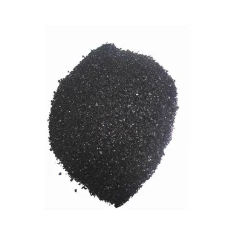Manufacturers Specializing in High-Quality Pure Indigo Dye for Textile Applications
The World of Pure Indigo Dye Manufacturers Tradition Meets Modernity
Indigo dye, with its rich history and vibrant hue, has been a coveted material for centuries, captivating artisans, fashion designers, and consumers alike. The allure of pure indigo dye lies not only in its stunning color but also in the cultural significance and traditional methods used in its production. Today, as sustainability becomes a priority in both fashion and textile industries, manufacturers of pure indigo dye are finding new ways to blend ancient techniques with modern practices.
The History of Indigo Dye
Indigo dyeing dates back thousands of years, with evidence of its use found in ancient civilizations such as Egypt, India, and China. The dye is derived from the leaves of the indigo plant, primarily *Indigofera tinctoria*, which is cultivated in various regions worldwide. Throughout history, indigo has been a symbol of wealth and status, often reserved for royalty and the elite. The fermentation and extraction processes have varied by region, but the core principles of creating the deep blue dye have remained relatively consistent.
Traditional Methods of Indigo Dye Production
The traditional method of indigo dye production involves fermenting the leaves of the indigo plant, which releases the dye precursor, indican. The leaves are collected, soaked, and allowed to ferment, converting the indican into indigo dye. This natural dyeing process has been cherished in many cultures, celebrated for its eco-friendliness and the unique characteristics of the dye it produces.
Regions renowned for their indigo dyeing techniques, such as Japan with its aizome method and West Africa with its artisan dye pits, have maintained these traditions through generations. Artisans use various techniques, from shibori (tie-dye) in Japan to intricate batik methods in Africa, showcasing the versatility of indigo and its remarkable capacity to create intricate patterns and designs.
The Shift Towards Sustainable Practices
In recent years, the global push for sustainability has heavily impacted indigo dye manufacturers. Conventional synthetic indigo, which dominates the market, is derived from petrochemical processes that have serious environmental implications. In contrast, pure indigo dye, derived from natural sources, offers a sustainable alternative that is increasingly favored by eco-conscious consumers and brands.
pure indigo dye manufacturers

Many manufacturers are now focusing on organic indigo cultivation and dyeing processes that prioritize environmental health. This includes reducing the use of harmful chemicals, preserving water resources, and supporting local farming communities. By embracing organic and natural indigo dyeing methods, manufacturers contribute to a more sustainable textile industry while offering consumers a product they can feel good about.
Innovations in Pure Indigo Dye Production
Advancements in technology have also played a significant role in the evolution of indigo dyeing. Modern indigo dye manufacturers are exploring new methodologies that enhance the quality and efficiency of pure indigo production. For example, innovations in dye extraction techniques have enabled producers to maximize yield while minimizing waste. Additionally, advancements in digital dyeing technology have allowed for more precise and consistent application of indigo on various fabrics.
Some manufacturers are also experimenting with hybrid approaches that combine traditional practices with modern techniques. This fusion not only preserves age-old techniques but also meets contemporary demands for speed and consistency in production. The result is a new generation of indigo fabrics that retain the authenticity of traditional dyeing while catering to modern fashion trends.
The Future of Pure Indigo Dye
As the demand for sustainable and ethically produced textiles rises, the future of pure indigo dye manufacturers looks promising. Consumers are increasingly seeking out products that tell a story—a narrative of handcrafted quality, sustainability, and cultural heritage. This shift in consumer behavior is prompting manufacturers to embrace transparency, sharing their sourcing and production methods with consumers to build trust and loyalty.
Moreover, the revival of artisanal craftsmanship in fashion and textiles is paving the way for collaboration between designers and indigo dye artisans. Brands are increasingly partnering with traditional dyers to create exclusive collections that celebrate the beauty of pure indigo while championing local craftsmanship.
In conclusion, the landscape of pure indigo dye manufacturing is a fascinating blend of tradition and innovation. As manufacturers continue to embrace sustainable practices and modern technology, the timeless allure of indigo will undoubtedly endure, captivating future generations while honoring the rich heritage from which it originates. Whether in high fashion, home textiles, or artisanal crafts, pure indigo dye remains a testament to the enduring legacy of one of the world's most beloved colors.
-
The Timeless Art of Denim Indigo Dye
NewsJul.01,2025
-
The Rise of Sulfur Dyed Denim
NewsJul.01,2025
-
The Rich Revival of the Best Indigo Dye
NewsJul.01,2025
-
The Enduring Strength of Sulphur Black
NewsJul.01,2025
-
The Ancient Art of Chinese Indigo Dye
NewsJul.01,2025
-
Industry Power of Indigo
NewsJul.01,2025
-
Black Sulfur is Leading the Next Wave
NewsJul.01,2025

Sulphur Black
1.Name: sulphur black; Sulfur Black; Sulphur Black 1;
2.Structure formula:
3.Molecule formula: C6H4N2O5
4.CAS No.: 1326-82-5
5.HS code: 32041911
6.Product specification:Appearance:black phosphorus flakes; black liquid

Bromo Indigo; Vat Bromo-Indigo; C.I.Vat Blue 5
1.Name: Bromo indigo; Vat bromo-indigo; C.I.Vat blue 5;
2.Structure formula:
3.Molecule formula: C16H6Br4N2O2
4.CAS No.: 2475-31-2
5.HS code: 3204151000 6.Major usage and instruction: Be mainly used to dye cotton fabrics.

Indigo Blue Vat Blue
1.Name: indigo blue,vat blue 1,
2.Structure formula:
3.Molecule formula: C16H10N2O2
4.. CAS No.: 482-89-3
5.Molecule weight: 262.62
6.HS code: 3204151000
7.Major usage and instruction: Be mainly used to dye cotton fabrics.

